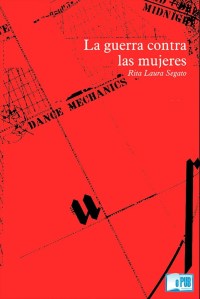 Of this final selection from Antonio Gramsci’s pre-prison writings, there is no doubt that the most interest text is the final one, “Some Aspects of the Southern Question,” a manuscript left incomplete as he was still working on it when he was arrested, tried, and thrown into a fascist jail in 1926. It is here, at last, that Gramsci first pays sustained attention to some of the themes and concepts that will be at the center of his reflections in the celebrated Prison Notebooks, not least the role of intellectuals and the concept of hegemony.
Of this final selection from Antonio Gramsci’s pre-prison writings, there is no doubt that the most interest text is the final one, “Some Aspects of the Southern Question,” a manuscript left incomplete as he was still working on it when he was arrested, tried, and thrown into a fascist jail in 1926. It is here, at last, that Gramsci first pays sustained attention to some of the themes and concepts that will be at the center of his reflections in the celebrated Prison Notebooks, not least the role of intellectuals and the concept of hegemony.
The term “hegemony” appears previously in this collection, but sparsely indeed. It crops up first in a passing mention to “the hegemonic positions of the reformists within the great trade-union organization” in an article on “Our Union Policy” of 1923 (250). It reappears in a piece the following year on “The Mezzogiorno and Fascism” (with a reference to “the Piedmontese and Northern governing hegemony” [261]), and then somewhat more insistently in Gramsci’s “Letter to the Central Committee of the Soviet Communist Party” of late 1926, where we are told that what is at stake in internal debates in Moscow is “the doctrine of the hegemony of the proletariat” (312). This last formulation, in an intervention into squabbles in the wake of the death of Lenin, between Stalin’s faction on the one hand and Trostky’s group on the other (Gramsci sides with Stalin), may well be an indication of the concept’s provenance in Lenin’s use of the term “gegemoniya.” In any case, what is clear is that both here and elsewhere (the rather more two-volume Lawrence and Wishart collection, Selections from Political Writings 1910-1920 and Selections from Political Writings 1921-1926 has other instances, including one dating back to 1918, though one would have to check the Italian original; the three-volume Scritti politici has no mention of “egemonia” or “egemonico” before 1920) Gramsci is far from making the concept his own. It is only with “Some Aspects of the Southern Question” that he even attempts a definition and begins to develop the concept further.
Again, this is not to say that something like the seeds of Gramsci’s own “doctrine” of hegemony are not evident already, even before it has received that name. I have noted his interest in the article “Two Revolutions” in an articulation between populist revolt and working-class self-determination. And a slightly different take on the problem of the relationship between politics and economics can be glimpsed in his observation, in “A Study of the Italian Situation” of 1926, that:
Politics is always one step behind–or many steps behind–economics. The State observation is far more resistant than it is often possible to believe; and at times of crisis, it is far more capable of organizing forces loyal to the regime than the depth of the crisis might lead one to suppose. This is especially true of the most important capitalist States. (297)
Indeed, here we surely get an indication of what will motivate the development of hegemony theory. For this is an analysis premised on defeat. We are no longer in the heady days of the Turin factory occupations of the beginning of the decade. In fact, in the intervening years Fascism has come to power, apparently aided and abetted by the “reformists” and Social Democrats who are the main targets of Gramsci’s critique in these articles. The situation is Italy is precarious at best. Not to mention the fact that (as his letter to the Russians indicates, but also judging from his appraisal of developments in England and elsewhere) events internationally no longer seem to be going the way of the Communist Revolution. Gramsci still fervently believes that the objective conditions are ripe for change, but he has to address the series of setbacks that the working-class movement has suffered year on year. And as others, too, will later discover, the notion of “hegemony” seems to offer solace and hope in such troubled times.
Hence, in “Some Aspects of the Southern Question,” Gramsci provides his first attempt at defining and elaborating on the concept of hegemony:
The Turin Communists had raised, in concrete terms, the question of the “hegemony of the proletariat”: in other words, the question of the social basis of the dictatorship of the proletariat and the workers’ State. For the proletariat to become the ruling, the dominant class, it must succeed in creating a system of class alliances which allow it to mobilize the majority of the population against capitalism and the bourgeois State. In Italy, within the real class relations that exist here, this means succeeding in obtaining the consent of the broad peasant masses” (316).
Seeking this consent, Gramsci goes on to explain, will mean confronting the “Southern question” (the relationship between Italy’s industrial north and its still broadly agrarian south) as well as the Vatican (the role of the church).
For the Italian proletariat, then, winning over the majority of the peasant masses means taking on board these two questions, from a social point of view; understanding the class needs they represent; incorporating these needs into its revolutionary transitional programme; and incorporating them among the objectives for which it is struggling. (316)
Here, then, hegemony is envisaged as a project that entails overcoming long-standing social divisions: between North and South, city and countryside, worker and peasant. The project’s success would also mean acknowledging a diversity of positions and perspectives, albeit then translating them into the idiom of class. But perhaps above all it is a matter of adopting “a social point of view” as a means of establishing the “social basis” for the new, socialist state and the dictatorship of the proletariat that will usher it in. That dictatorship will involve the elimination of the peasantry (just as much as it involves the elimination of the bourgeoisie), but for now a “transitional programme” is envisaged, for which the perspective, needs, and objectives of the peasantry are to be acknowledged.
As Gramsci continues to explore and develop this conception of hegemony, he increasingly associates it with the role and social function of the “intellectual,” a social group to which he had paid little attention hitherto. At present, in this truncated, unfinished text, this is a category that is rather amorphous; it includes civil servants and school teachers, as well as writers and priests. What they have in common is their mediating function: “the Southern peasant,” for instance, “is linked to the great landowner through the mediation of the intellectual” (330). And while Gramsci continues to identify “the urban proletariat as the modern protagonist of Italian history and hence also of the Southern question” (334), he is beginning to come to conclusion that the working class is perhaps not yet ready for revolution. For “the proletariat, as a class, is short of organizing elements; it does not have its own layer of intellectuals and it will only be able to form such a stratum, very slowly and laboriously, after the conquest of State power” (336). It is then just as Gramsci’s pen runs out (the text trails off a paragraph later) that he stumbles across a key paradox, even Catch 22: the working class will only be able to produce its own intellectuals (and so, hegemony) after the capture of state power; and yet the state will not be captured, as the previous five years seem to have shown, without the contribution of intellectuals to the labor of hegemony.
We will see whether the concept of hegemony survives this contradiction in the subsequent phase of Gramsci’s writing, the Prison Notebooks, or whether in some sense the unfinished “Some Aspects of the Southern Question” is both high-water mark and dead-end for hegemony thinking.

 In her chapter, “Patriarchy: From the Margins to the Center” (from La guerra contra las mujeres [2017]), Rita Segato goes further. We are all trained to be psychopaths now, she tells us, as part of a “pedagogy of cruelty” that is the “nursery for psychopathic personalities that are valorized by the spirit of the age and functional for this apocalyptic phase of capitalism” (102). Segato presents a brief reading of Stanley Kubrick’s A Clockwork Orange to make her point, though what she sees as “most extraordinary” about the film is that the shock with which it was received when it came out (in 1971) now seems to have almost totally dissipated. What was once taken as itself an almost psychopathic assault on the viewer’s senses is now just another movie; this shift in our sensibility is “a clear indication [. . .] of the naturalization of the psychopathic personality and of violence” (102). The narcissistic “ultra-violence” of the gang of dandies that the film portrays is now fully incorporated within the social order that it once seemed to threaten.
In her chapter, “Patriarchy: From the Margins to the Center” (from La guerra contra las mujeres [2017]), Rita Segato goes further. We are all trained to be psychopaths now, she tells us, as part of a “pedagogy of cruelty” that is the “nursery for psychopathic personalities that are valorized by the spirit of the age and functional for this apocalyptic phase of capitalism” (102). Segato presents a brief reading of Stanley Kubrick’s A Clockwork Orange to make her point, though what she sees as “most extraordinary” about the film is that the shock with which it was received when it came out (in 1971) now seems to have almost totally dissipated. What was once taken as itself an almost psychopathic assault on the viewer’s senses is now just another movie; this shift in our sensibility is “a clear indication [. . .] of the naturalization of the psychopathic personality and of violence” (102). The narcissistic “ultra-violence” of the gang of dandies that the film portrays is now fully incorporated within the social order that it once seemed to threaten. Femininity is all too often defined by the image (and so by the male gaze). Women are reduced to appearance, and judged in terms of the extent to which they measure up to some mythical ideal. Mariana Enríquez’s short story, “Las cosas que perdimos en el fuego” (“Things We Lost in the Fire”), presents a surreal and disturbing counter-mythology that explores what happens when that image is subject to attack, not least by women themselves.
Femininity is all too often defined by the image (and so by the male gaze). Women are reduced to appearance, and judged in terms of the extent to which they measure up to some mythical ideal. Mariana Enríquez’s short story, “Las cosas que perdimos en el fuego” (“Things We Lost in the Fire”), presents a surreal and disturbing counter-mythology that explores what happens when that image is subject to attack, not least by women themselves.